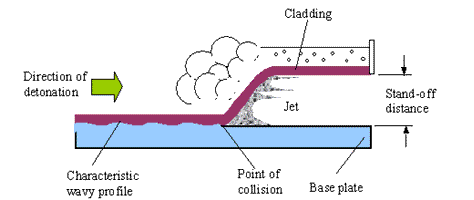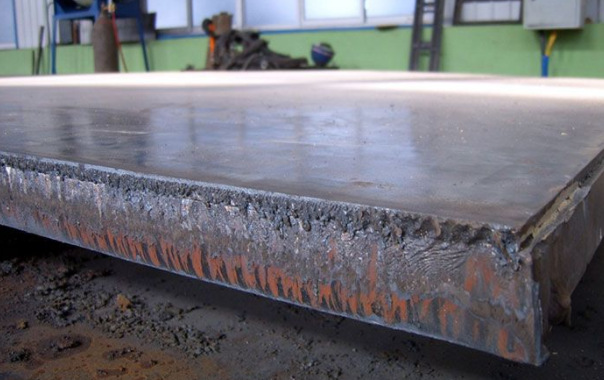A plate of cladding material is accelerated under the influence of a detonation to impinge obliquely onto a base plate. This is illustrated by the figure below. A jet of metal (from both plates) in the form of a spray is ejected ahead of the collision point, cleaning the weld surfaces of any oxide films or surface impurities. Pressure at the collision point is well in excess of the yield strength of any metal, resulting in inter-atomic bonding between the contacting surfaces.

Schematic representation of explosive cladding
This method can clad a wide range of metals to almost any base material. The main applications are in flat plate cladding or cladding of cylindrical geometries. The main industrial sectors include the food and chemical process industries. Explosive cladding can also be used to produce microwelds between metal foils as thin as 11µm. An example of this is the coating of titanium sheets with platinum.

See further information about EXPLOSIVE CLADDING, please contact us.